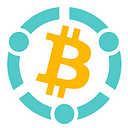ViaBTC Guide|The Magic of the Little-known Decentralized Stablecoin DAI
As the first decentralized stablecoin issued by Maker DAO on Ethereum, DAI is now valued at $5.7 billion (source: CoinMarketCap), ranking 22nd among all cryptocurrencies. It’s clear from the data that DAI has become one of the most popular stablecoins out there. So, what is the magic of DAI that makes it stand out?
We should first address the question as to why stablecoin is needed in the market. Picture it, if the value of a cryptocurrency always remains highly volatile, for instance, a 30% drop within 24 hours, then it cannot be used for payment and transaction on a day-to-day basis. In times of market swing, investors hoping to stay can choose stablecoins to keep the crypto value.
There are roughly three types of stablecoins: fiat-backed, crypto-backed, and algorithmic stablecoins. For example, stablecoins such as USDT and TUSD are fiat-backed, while today’s focus, DAI, is crypto-backed.
DAI is a decentralized stablecoin issued by Maker DAO in December 2017. The cryptocurrency is called decentralized stablecoin because Maker DAO, DAI’s issuing organization, is a decentralized autonomous organization, i.e., a company running in a decentralized manner through smart contracts. Instead of being operated by a private company, DAI is managed by a decentralized autonomous organization through software protocol. As such, all issuance and burning of the token are managed by and publicized on Ethereum-driven self-executing smart contracts, thereby making the system more transparent.
We are all familiar with Tether’s promise when USDT is issued: Each USDT must be backed by one U.S. dollar in reserve. Unlike USDT, DAI has no centralized organization like Tether behind its crypto value, neither is there any physical dollar backing the value of each DAI. The most appealing aspect about DAI is that the cryptocurrency is entirely achieved through Ethereum-based smart contracts.
So how does DAI keep “stability”? A mechanism was put in place that lowers the DAI price when it exceeds $1 and lifts the price when it falls below $1. Under this mechanism, DAI users might be able to receive incentives simply by taking part: Whenever the DAI price is less than $1, users will profit, and the further it deviates from $1, the more incentives users will receive when the price gets restored to $1.
If you are looking for a loan and if you are holding ETH in the belief that it will appreciate, then you can generate DAI using ETH as the collateral. On trading platforms, you can use DAI to purchase more ETH, which can generate more CDP (collateral debt obligation, i.e., the DAI collateral loan). In this case, you can run the entire leverage on blockchains, without seeking help from any third party or centralized organization.
When the DAI price exceeds $1 due to increasing demand, you can generate more DAI, and sell them at above $1 prices to profit; when the DAI price is less than $1, CDP owners can repay their debt at lower prices.
Here is a simple example: Mr. Smith opened a CDP using $1,000 worth of ETH, and then withdraws 500 DAI. When closing the CDP, Mr. Smith needs to pay off the 500 DAI. When the DAI price is down to $0.99, Mr. Smith can pay off the loan with 500 DAI at $495, thereby making an ETH profit of $5. This supply-demand balance ensures that DAI always remains anchored to $1.
In short, DAI is a design that resembles contracts: DAI does not force the 1:1 anchoring to the dollar; instead, it drives arbitrage-focused investors to help the DAI price stabilize at $1 through its incentives mechanism. The adoption of this game-theory-based incentives mechanism makes DAI more credible as a stablecoin, which is why the coin has emerged from the crowd.
